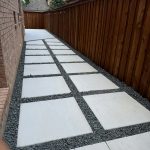Owning a pool is one of the best ways to enjoy North Texas summers. But like anything exposed to water, sun, and weather, pools don’t last forever without care. Regular pool repairs and resurfacing keep your pool safe, attractive, and ready for family fun. The big question most homeowners ask is: how often should you repair or resurface a pool? Let’s break it down.
Pool Repairs Explained | Maintenance Schedule & Resurfacing Frequency
Most pools need small repairs every few years. These can include fixing tiles, sealing cracks, or patching plaster. Resurfacing is a larger project and is usually needed every 7 to 15 years, depending on the material and how well you follow your pool maintenance schedule. Gunite and concrete pools often last longer, while plaster finishes may need attention sooner.
Expert tip: Marcos, founder of Professional Brick & Stone Works, explains, “A pool is like any other structure on your property—it’s not just about fixing damage, it’s about protecting your investment. Staying on top of a repair timeline saves homeowners thousands in the long run.”
Signs It’s Time for Pool Repairs | Understanding Your Repair Timeline
Look for these common warning signs that it’s time to call for pool repair services near you:
- Cracks in the plaster, concrete, or coping
- Loose or missing tiles
- Stains that don’t scrub away
- Pool water level dropping from leaks
- Rough or pitted surfaces that hurt your feet
If you see any of these issues, don’t wait—schedule pool resurfacing or repair before the damage spreads.
Pool Maintenance Schedule | When to Repair vs. Resurface
Here’s a simple guide for North Texas homeowners:
- Annual: Book pool maintenance appointments to check for leaks, clean filters, and test water balance.
- Every 3–5 years: Repair small cracks, regrout pool tiles, and reseal joints.
- Every 7–15 years: Plan for residential pool resurfacing services depending on the finish. Plaster wears fastest, while pebble or quartz can last longer.
How Long Does Pool Resurfacing Last? | Homeowner’s Guide
- Plaster: 7–10 years with regular care
- Quartz: 10–12 years with proper chemical balance
- Pebble: 12–15 years and very durable
- Tile: 15+ years with ongoing tile maintenance
Marcos notes, “Texas heat and pool chemicals break surfaces down faster than most people expect. That’s why resurfacing frequency is different here than in cooler climates.”
Pool Repairs and Resurfacing Frequency | Expert Recommendations
To keep your pool in top shape:
- Inspect your pool surface every season.
- Hire pool maintenance experts for an annual inspection and repair booking.
- Consider resurfacing sooner if you notice rough surfaces, leaks, or large cracks.
When to Schedule Pool Repairs | Keeping Your Pool in Top Shape
The best time to book pool resurfacing or major repairs is during spring or fall. Contractors are more available, and you’ll avoid delays during the busy summer swim season.
Pool Repair Checklist | Maintenance Tips to Extend Pool Life
- Skim and clean your pool weekly
- Keep chemicals balanced to prevent surface wear
- Fix small cracks before they expand
- Replace worn-out caulking and coping
- Schedule a professional pool inspection and repair booking once a year
Cost and Timing of Pool Repairs | Planning Your Maintenance Schedule
The cost of pool repairs and resurfacing depends on size, material, and damage. On average in North Texas:
- Small crack repair: a few hundred dollars
- Full resurfacing: several thousand dollars, depending on finish
- Emergency pool repair service: higher rates due to urgency
Tip: Get a pool resurfacing estimate online to compare options and plan ahead.
Get Started Today
Looking to keep your pool safe, smooth, and beautiful for years to come? Professional Brick & Stone Works has over 15 years of experience helping North Texas homeowners with durable masonry, stone, and pool repairs. Call us today to hire pool maintenance experts, schedule pool resurfacing, or request a pool resurfacing estimate online. Keep your backyard investment ready for every season.
More Information:








